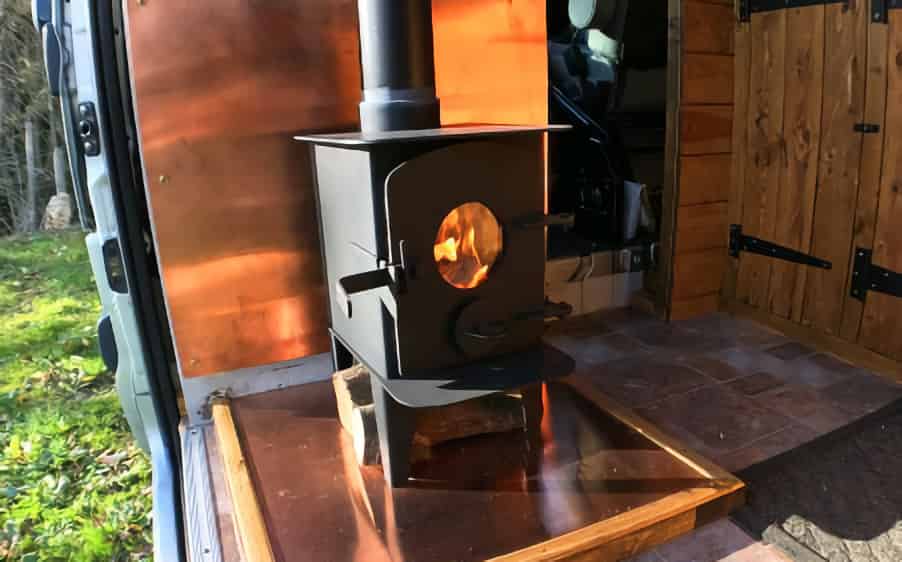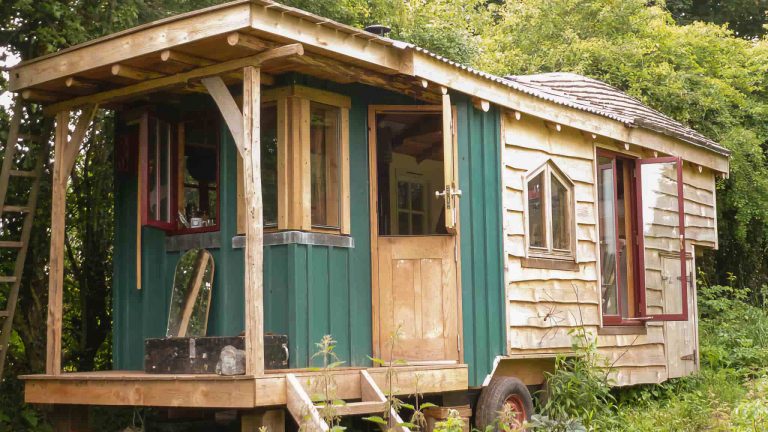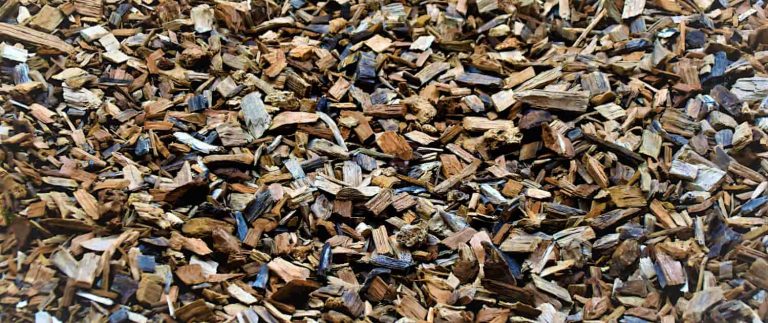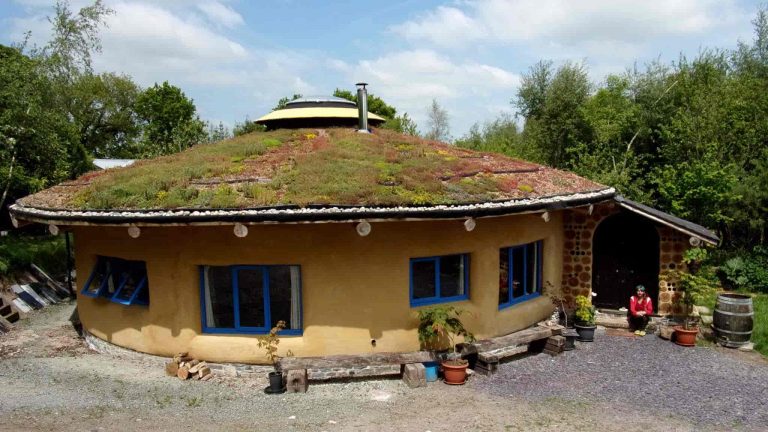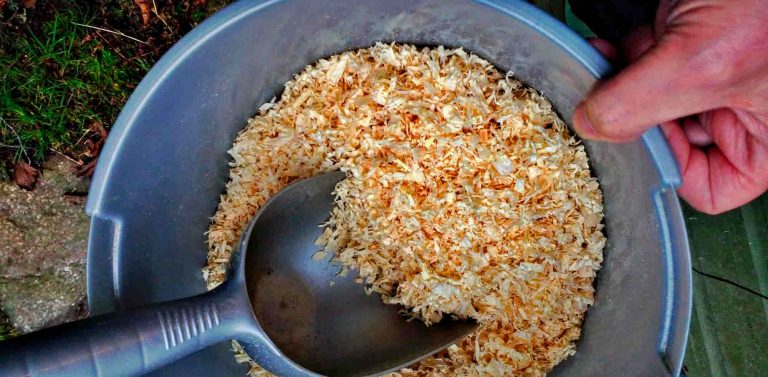The best wood burning stove for cabins, sheds, tiny homes and small spaces
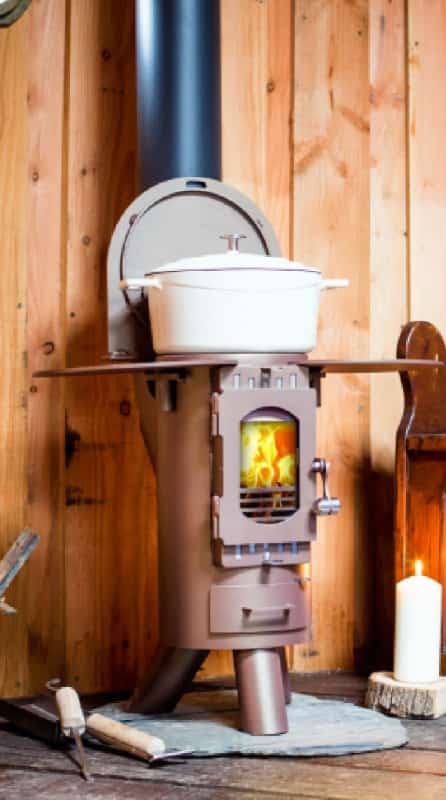
When you start thinking about using a small space (shed, summerhouse, cabin, tiny home, caravan etc) throughout the year, it becomes obvious that having some way of heating the space will extend and enhance its usability. Heating becomes a necessity if you are living there throughout the winter!
As we’re mainly dealing with off-grid scenarios on this website, you probably won’t have the luxury of enough spare electricity to use that for heating – winter is the time when generating electricity through solar becomes most difficult (low/weak sun, shorter daylight hours and greater chance of cloud), so let’s put electric heating to one side.
I think you’re left with three options, diesel heaters (recently, low-cost Chinese-made diesel heaters have flooded the campervan market), gas heaters (propane / LPG) or a wood burning stove. I don’t have a lot of experience of gas stoves or diesel heaters, so I’m just going to talk about wood burning stoves, and after all, once you have the stove, you can (in theory) be self-reliant on wood as a fuel and resilient to external availability and price fluctuations of LPG or diesel.
Please bear in mind, these are just my thoughts and opinions, and are based on what’s available in the UK, in late 2023.
Environmental aspects of wood burning stoves
There’s nothing quite like the feeling you get from sitting in front of a wood burner! From the gentle crackle of the wood as it burns, the gorgeous colour that the flames emit, and that special scent in the air.
But as much as we might romanticise about them, there are also a few downsides that you should at least think about…
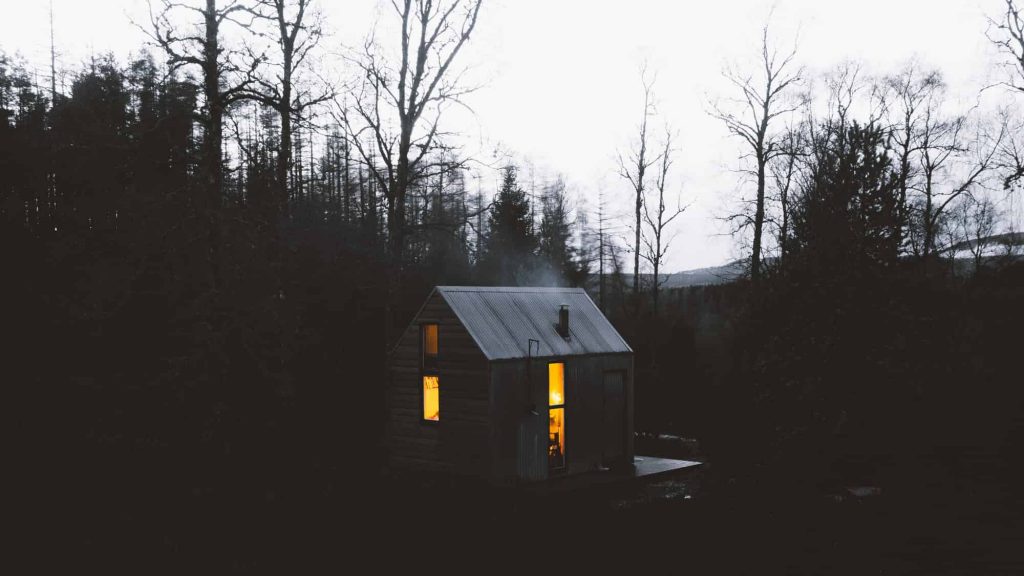
Until a few years ago, wood burning stoves were universally seen as being a good ecological option for heating, especially compared to gas, oil or electricity (generated with fossil fuels). Improvements in the design and efficiency of wood burning stoves over the years have increased their eco-performance (lower smoke and particulate emissions), compared to older models and other methods of burning wood, such as an open fire.
Wood (properly grown, harvested and dried) is a renewable resource. As wood grows, it absorbs CO2, and when burned with the correct moisture content, can reduce your heating related CO2 emissions compared to using gas, oil or other fossil fuels.
On the flip side, wood burning stoves have come in for criticism over what’s known as PM2.5 emissions. PM2.5 refers to a specific size of particulate matter or particles that when released into the air, can affect both outdoor and indoor air quality and in the long term, might affect human health as well as aggravating conditions such as asthma.
However, I’ve read that the current information on PM2.5 emissions for burning wood (as of 2023, when referring to PM2.5 particulate emissions) published by the UK government, also includes open fires, bonfires, wildfires, pizza ovens, fire pits and BBQ’s within the same category as wood burning stoves, so the evidence is not completely cut and dried.
Having said that, if I was living in an urban area, I don’t think I’d currently opt for a wood burning stove, but in a remote area, with low population density, I still would.
Keeping a small wood burner going through the night
One of the downsides to smaller, low output wood burning is that the firebox is quite small, which means they need to be fed with fuel more often than a larger, higher output stove. You might also need to chop or buy your wood as smaller (shorter) pieces so they can fit.
Keeping a small wood burner going through the night can be a challenge. I remember an acquaintance who lived in a yurt mentioning that they’d have to get up at 4 or 5 in the morning to reload the burner to prevent things from freezing inside the yurt! That said, yurts are neither highly insulated nor very air tight, so in a properly insulated building, it might be less of an issue.
When choosing a wood burner, check out the air flow controls – the better and finer control you have over airflow, the better the chance you’ll have to regulate (slow down) the burn rate to make the burner ‘tick over’ and keep some heat coming out for as long as possible.
If you’re in any doubt, speak to the manufacturer and get their advice for your situation, or find someone who has had one for a while and ask them.
Choosing the right heat output for your space
Wood burning stoves all have a output rated in KW. If the output from your stove is too low, then it might not be able to adequately heat your space, but conversely, if it’s too high, you can quickly overheat a space.
Most manufacturers will give you guidelines on the ideal space for each stove (which will vary depending on whether it’s for primary heat or just a top up), but these should be treated just as guides only – the amount of insulation and air tightness of your space will have a huge impact too.
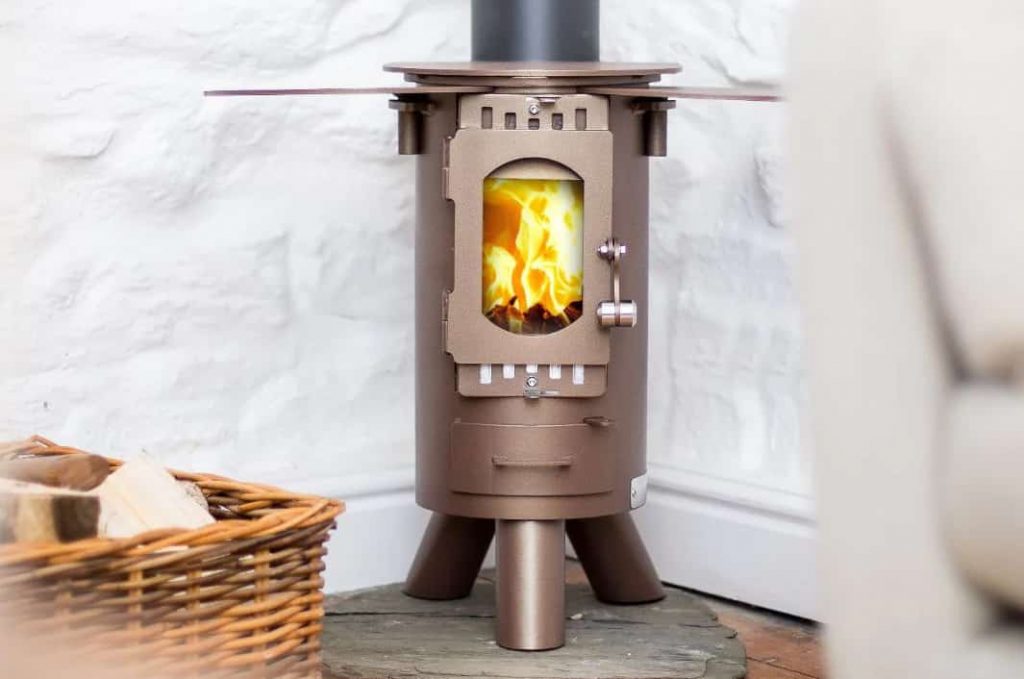
Anevay Stoves say “You need 1kW of heat, for every 14 cubic meters, to raise the temperature 20 degrees above ambient in a reasonably insulated space.” They also have a handy calculator on their website – just type in the width, height and depth of your space in metres, and it will tell you how many KW of heat you need:
https://anevaystoves.com/blogs/news/how-to-choose-the-correct-stove-for-my-space
Installation and certification
Hopefully, it’s obvious that wood burners, together with their flues, get very hot. In a small space you need to think safety when installing a wood burner due to the fire risk. I’m not going to cover the installation, because I’m not qualified to – at some point, I’ll write a blog post covering my own installation, but do seek advice to ensure you eliminate fire risks with heat shields, non-combustible materials, space and vigilance.
Get a Carbon Monoxide alarm and install it correctly – wood burners produce carbon monoxide. And don’t forget that burning wood consumes oxygen, so ensure there is a good flow of fresh air to enable the fire to burn well at all times.
Always use an insulated flue, especially where it passes through walls or ceiling – as well as being safer, they improve the draw (updraft) and enable the stove to perform more efficiently and with lower emissions. By the way, insulated flues are not cheap, so you’ll need to factor this in.
If you’re installing a wood burner in a permanent dwelling, then it’s my understanding that the installation of the woodburner and flue must be either signed off by a building control official (see your local council) or be installed by a ‘competent’ person, which is reality means a HETAS certified engineer. Installations have to comply with part J of UK building regulations.
Installations in narrowboats etc will need to be approved by a boat safety inspector in order to get or have your boat safety certificate issued/renewed. For other places (cabins, sheds, yurts, camper vans, vans, caravans etc), there’s no official inspection or certification, but remember you are responsible for your own safety and of those with you in that space.
Any installation that requires certification will also need the stove to be CE approved.
What to burn?
For wood to burn efficiently, it must be seasoned or dried. The moisture content should be under 20% otherwise, your burn will be a) inefficient b) potentially increase the soot deposits in your chimney and c) emit more smoke and pollution.
To get wood to that moisture level means the wood must either be seasoned or kiln dried. I have a bit of an issue with kiln drying on the basis that you are using one form of energy to dry wood so you can burn it, so it’s like using double the energy! However, I’ve been told that many kilns run off ‘waste wood’, which I guess is better, but it still seems wasteful to me.
The Woodshack have a nice blog post about moisture levels in wood and how to check if it’s really dry enough to burn efficiently: https://www.the-woodshack.co.uk/blog/moisture-content-of-firewood-explained
There are lots of arguments and folktales and myths about the best wood to burn – have a search online for some ideas, but Ash, Oak, Cherry, Hawthorn and Yew are all good choice. Conversely, there are certain woods to avoid, such as Eucalyptus, Larch, and Firs due to their high sap content which can cause excessive deposits in your flue.
A relatively new development is ‘heat logs’. Usually made from compressed sawdust, these logs are regularised and commercially produced to a standard. There are many types available so it’s best to get a personal recommendation, but take a look at Lekto Wood Fuels to get a taster.
Finally, do consider the size of your wood! Regular woodstoves can take logs of up to 25cm long, but smaller stoves can’t fit that size wood. My own Glastonbury Burners stove prefers logs just over 15cm long. I’ve recently found a company in the UK called Love-Logs and they sell “Hobbit Logs” by mail order in either 20cm or 15cm lengths – they also claim to be ‘plastic free’ which is great.
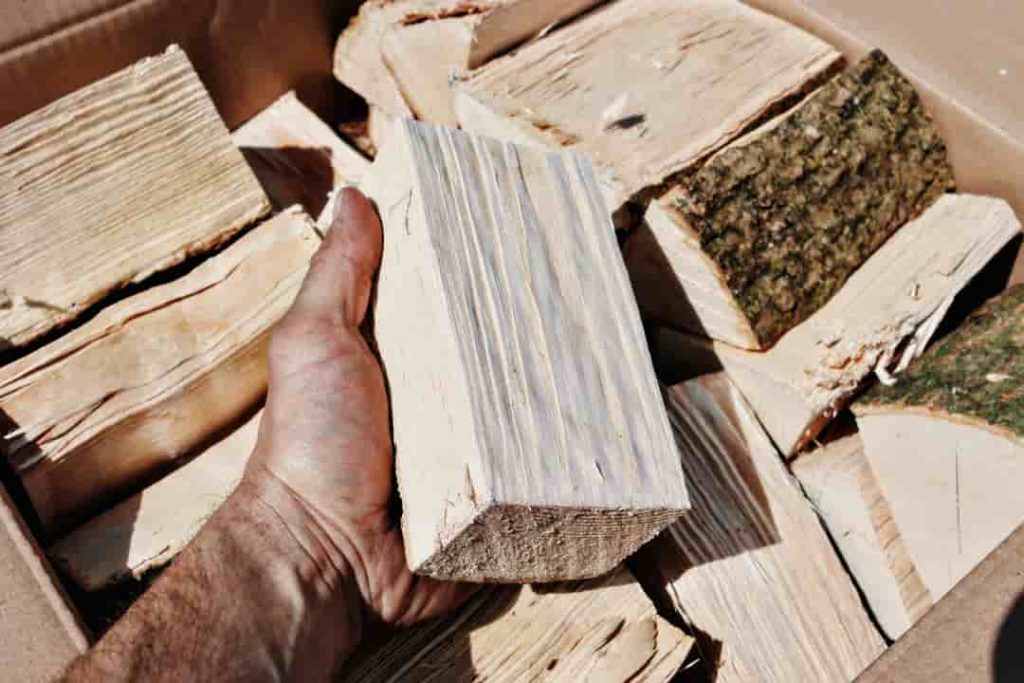
My top choices!
Right, that’s enough of the background waffle – time to talk specifics!
Glastonbury Burners
I own a Glastonbury Burners ‘Gnome’ and for the money, it’s a great little stove. The design is simple and works well. Like most woodburners, prices have increased substantially in the past few years as raw materials and energy prices have soared, but it’s still half the price of most others.
It’s not CE marked so cannot legally be installed in houses, but for vans, caravans and mobile spaces, it could be perfect. It made from steel plate and is hand-made by ‘Dave’ who owns Glastonbury Burners.
I’ve found that it can be hard to control the air flow at times – the air flow doesn’t have a fine level of adjustment. The model I bought (the Gnome) is currently out of stock, although if I was buying today, I’d go for the Cyclops, which is a slightly taller than the Gnome and has an output around 2KW, but has a viewing window.
The glass will likely soot up quite quickly as there’s no ‘air wash’ to help keep it clean, but it’s simple, durable and well made.
At the time of writing (August 2023), the Glastonbury Burners Cyclops is under £290 plus shipping.
https://www.glastonburyburners.co.uk/
The Hobbit by Salamander Stoves
The Hobbit is a ‘proper’ cast iron multi-fuel stove. Classically styled and available in a range of colours, the Hobbit is made in UK and has earned a solid reputation amongst narrow boat owners and home owner who appreciate the compact size, but good heat output and incredible durability.
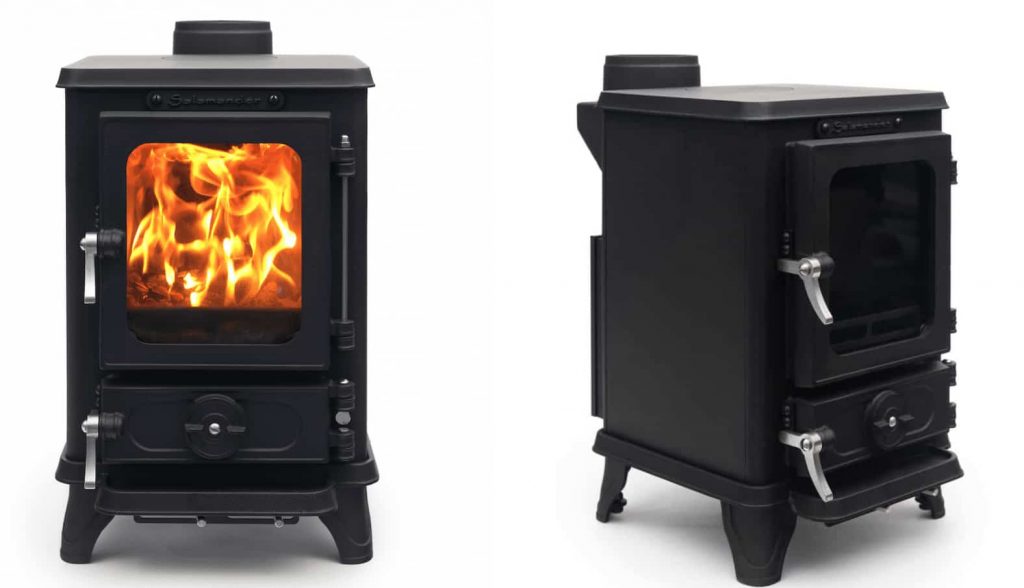
The Hobbit has an output of 4KW and is the only wood burner in my list that is compliant with the SIA Eco Design 2022 standard (exceeds DEFRA clean air standards) and CE marked, making it suitable for installation in homes as well as off-grid cabins etc.
The glass viewing window has an ‘air wash’ system to help keep the glass free from soot, so you can enjoy the view!
As well as the standard version, you can purchase the Hobbit as the SE version which is suitable for installation in smoke controlled zones.
At the time of writing (August 2023), the Hobbit Stove is £710 plus shipping.
https://salamanderstoves.com/product-category/the-hobbit-stove/
Anevay Stoves
The final wood burner range in my shortlist is made by the awkwardly named Anevay Stoves. Based in Cornwall, they manufacture a range of compact wood-burning stoves in the UK for Glamping and small spaces.

For indoor use, they currently have four products:
- The Shepherd – 1.7 KW heat output
- The Traveller – 3.9 KW heat output
- The Fintan – 3.6 KW heat output
- The Tana – 4.8 KW heat output
They’re made from steel and have a comprehensive range of options, including extended warming and cooking surfaces, plus various colour choices. All feature a door with window and ‘air wash’ system, and as far as I am aware, all are CE approved too.
They look really stylish, but are a little on the expensive side with prices ranging from £650 to £1250 (as of August 2023) for the stoves, plus options etc.
Anevay stoves: https://anevaystoves.com/collections/small-space-stoves
Conclusions
It’s hard to give a ‘best choice’ here because the right one for you will depend on the space you need to heat.
For a smaller space, and if you’re on a budget, Glastonbury Burners make stoves you can’t really go wrong with.
The Anevay products are very stylish and have a great range of options to extend them into cooking stoves too. They’re CE approved for added peace of mind, but they’re more expensive (and yes, I do want one really!).
For a larger space, or for installation in a permanent dwelling, the the Hobbit offers all the certifications you need at a good price and many options to boot.
So that’s my choices – based on what I’ve used, seen and desired! But what about you? Do you agree with me or have you tried different wood burners?
Let me know in the comments below!
I hope you found this useful. Please note that none of the links above are affiliate links – I don’t earn anything for referring you. If you found some use or value in this work, please do consider ‘buying me a coffee‘ using the link in the footer – it’s much appreciated!


